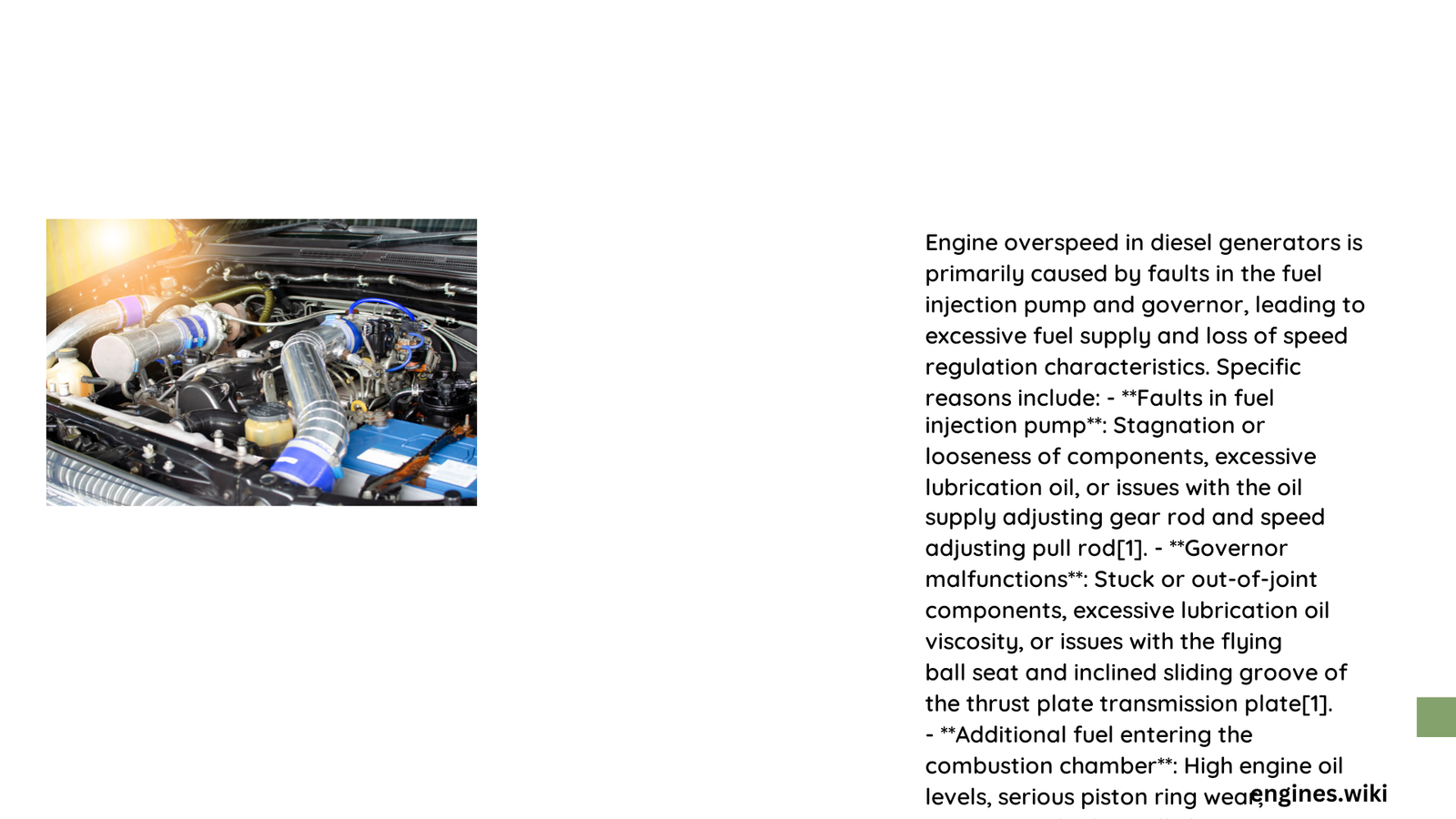Engine overspeed represents a critical mechanical phenomenon where rotating machinery exceeds its designed maximum rotational speed, potentially causing catastrophic damage. Multiple interconnected mechanical, electronic, and systemic factors contribute to these dangerous scenarios, ranging from sensor malfunctions and valve failures to complex control system breakdowns that compromise engine safety mechanisms.
What Triggers Mechanical Engine Overspeed?
Shaft and Coupling Failures
Mechanical engine overspeed often originates from fundamental structural compromises. A broken or damaged shaft disrupts normal rotational dynamics, allowing uncontrolled acceleration. Key mechanical failure points include:
- Shaft Structural Integrity
- Complete shaft fracture
- Partial shaft damage
- Unexpected load redistribution
| Failure Type | Potential RPM Increase | Risk Level |
|---|---|---|
| Minor Shaft Damage | 10-25% | Moderate |
| Complete Shaft Fracture | 50-100% | Critical |
| Partial Structural Compromise | 25-40% | High |
Control Valve Malfunctions
Control valves play a pivotal role in regulating engine speed. When these mechanisms fail, they can inadvertently permit excessive fuel or steam flow, dramatically increasing rotational velocity.
Specific Valve Failure Mechanisms
- Stuck open pressure valves
- Compromised hydraulic control systems
- Sensor miscalibration leading to incorrect valve positioning
What Electronic Factors Contribute to Engine Overspeed?

Sensor and Signal Complications
Electronic systems rely on precise sensor inputs to maintain safe operational parameters. Compromised sensor data can trigger catastrophic overspeed events:
- Corrupted Speed Signals
- Incorrect sensor mounting
- Electrical interference
-
Signal processing errors
-
Control System Vulnerabilities
- Programming inconsistencies
- Invalid input signal interpretation
- Delayed response mechanisms
Fuel System Interactions
Fuel delivery systems significantly influence engine speed regulation. Potential failure points include:
- Malfunctioning fuel injectors
- Unexpected fuel pressure variations
- Electronic fuel management system errors
How Do Turbocharger Dynamics Impact Overspeed?
Turbochargers introduce complex variables into engine speed management. While not direct causative agents, they can amplify overspeed risks through:
- Boost pressure inconsistencies
- Compressor wheel structural limitations
- Unexpected rotational acceleration
Economic and Safety Implications
Repair and Mitigation Costs
| Repair Category | Estimated Cost Range | Average Duration |
|---|---|---|
| Diagnostic Evaluation | $500 – $2,000 | 1-3 days |
| Component Replacement | $2,000 – $25,000 | 3-14 days |
| Complete System Overhaul | $25,000 – $100,000 | 2-6 weeks |
Preventative Strategies
- Regular precision calibration
- Advanced diagnostic monitoring
- Comprehensive maintenance protocols
- Real-time sensor validation systems
Key Takeaway
Understanding engine overspeed requires a holistic approach, recognizing the intricate interactions between mechanical, electronic, and systemic components. Proactive maintenance and sophisticated diagnostic techniques remain the most effective prevention strategies.
